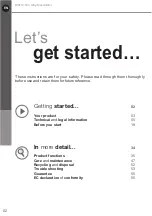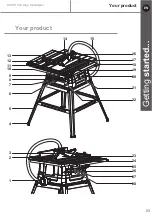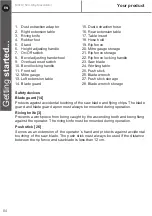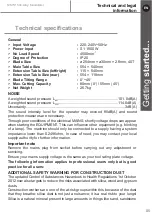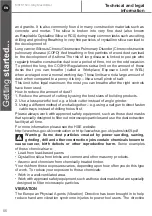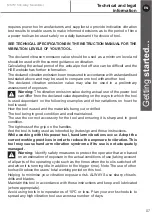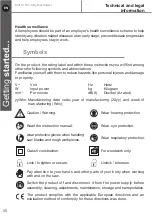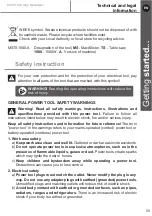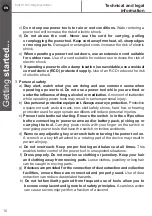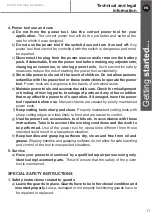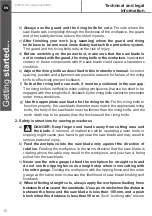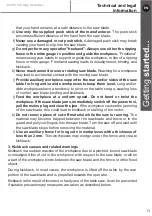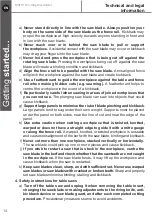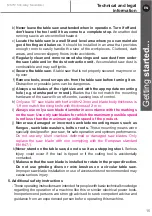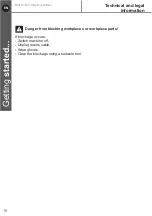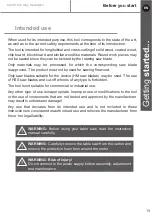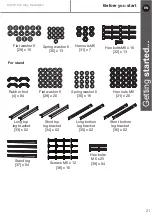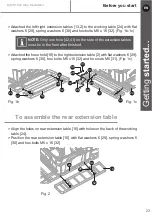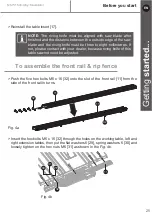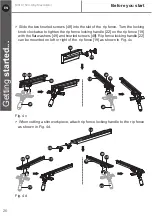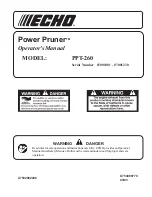
Technical and legal
information
MSTS1500-A
by
MacAllister
4. Power tool use and care
a)
Do not force the power tool. Use the correct power tool for your
application.
The correct power tool will do the job better and safer at the
rate for which it was designed.
b)
Do not use the power tool if the switch does not turn it on and off.
Any
power tool that cannot be controlled with the switch is dangerous and must
be repaired.
c)
Disconnect the plug from the power source and/or remove the battery
pack, if detachable, from the power tool before making any adjustments,
changing accessories, or storing power tools.
Such preventive safety
measures reduce the risk of starting the power tool accidentally.
d)
Store idle power tools out of the reach of children. Do not allow persons
unfamiliar with the power tool or these instructions to operate the power
tool.
Power tools are dangerous in the hands of untrained users.
e)
Maintain power tools and accessories with care. Check for misalignment
or binding of moving parts, breakage of parts and any other condition
that may affect the power tool’s operation. If damaged, have the power
tool repaired before use.
Many accidents are caused by poorly maintained
power tools.
f)
Keep cutting tools sharp and clean.
Properly maintained cutting tools with
sharp cutting edges are less likely to bind and are easier to control.
g)
Use the power tool, accessories, tool bits etc. in accordance with these
instructions. Take into account the working conditions and the work to
be performed.
Use of the power tool for operations different from those
intended could result in a hazardous situation.
h)
Keep handles and grasping surfaces dry, clean and free from oil and
grease.
Slippery handles and grasping surfaces do not allow for safe handling
and control of the tool in unexpected situations.
5. Service
a)
Have your power tool serviced by a qualified repair person using only
identical replacement parts.
This will ensure that the safety of the power
tool is maintained.
SPECIAL SAFETY INSTRUCTIONS
1. Safety instructions related to guards
a)
Leave the guards in place. Guards have to be in functional condition and
mounted properly.
Loose, damaged or not properly functioning guards have to
be repaired or replaced.
Getting
started...
11
EN


